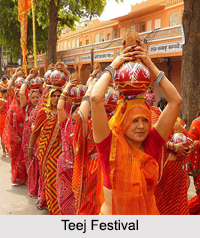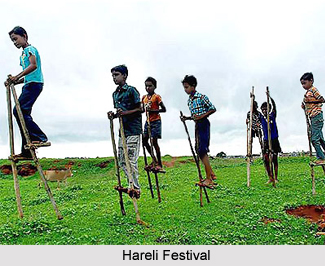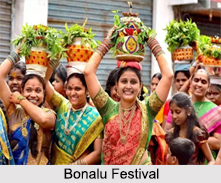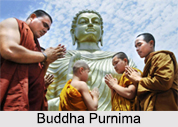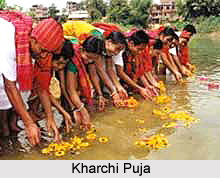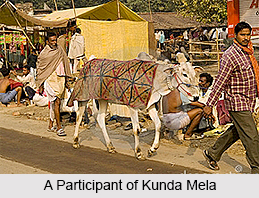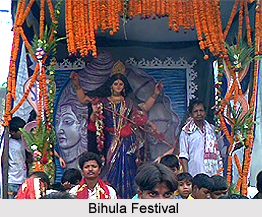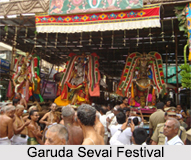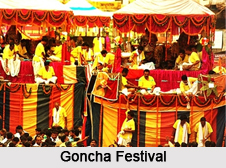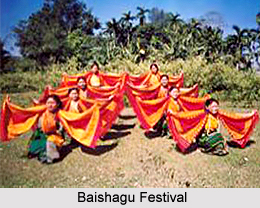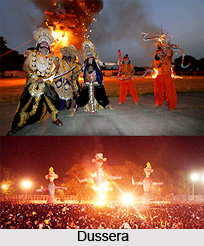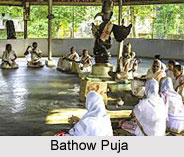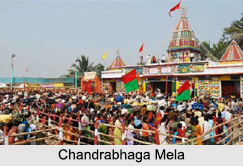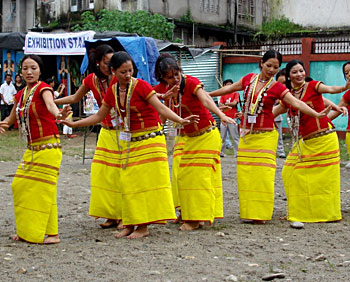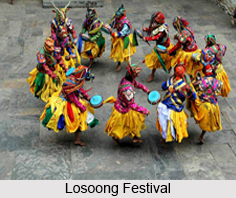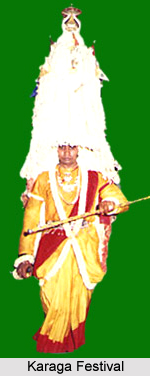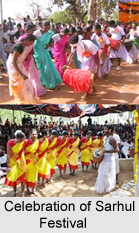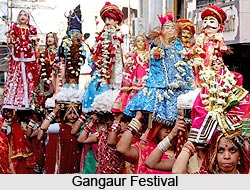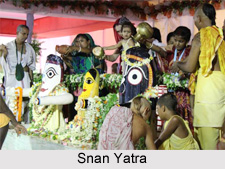 Bathing Festival of Odisha is one of the quintessential festivals associated with Ratha Yatra Daityas entering the inner chamber of the temple and pick up the idols one by one. They are taken in a procession which is accompanied by beating of gongs and decorative umbrellas.
Bathing Festival of Odisha is one of the quintessential festivals associated with Ratha Yatra Daityas entering the inner chamber of the temple and pick up the idols one by one. They are taken in a procession which is accompanied by beating of gongs and decorative umbrellas.
Procedure 1
This is done after the images of Goddess Lakshmi and Bhudevi have been removed from the temple`s inner chamber by Brahmin servants. The platform is located near the outer wall that faces the east. The platform is raised so that the images are visible from the street.
Procedure 2
Once the four wooden images of Lord Jagannath, his brother Bala Bhadra, their sister Subhadra and Sudarsana are standing on this platform, the Daityas along with the Puja pandas fetch water from a storeroom. This water is placed in one hundred and eight pots. The water comes from a covered well that is situated in front of the temple of Sitala. The Sitala goddess is placed near the northern gate of the temple compound. The temple servants climb on the wall at the rear of the bathing platform and pour water on top of the images. Four images are bathed simultaneously. The images are discoloured by the water. The pilgrims take the water as the left over of the deities. After this bath the pilgrims are allowed on the platform.
Procedure 3
Thereafter the platform is cleared of people and the priest performs a ritual called `sweeping` or cherapahanra. He sweeps the bathing platform with a gold-handled broom; while other temple servants sprinkle it with water and sandalwood powder. Huge masks that look like an elephant`s head are brought to the platform and fastened on the images. These masks hide the images completely. The deities are offered the regular sixteen fold oblations. This is the time when cooked food is offered in public.
Procedure 4
Pandas sit in front of the three main deities facing north. They have offered the fourteen first offerings. After the offering, the platform is accessible to the public. The images are taken back in the same manner as they were brought in to the main temple. They are placed in the corridor which leads from the inner sanctum to the outer sanctum. There they are placed in a semi-reclining position.
